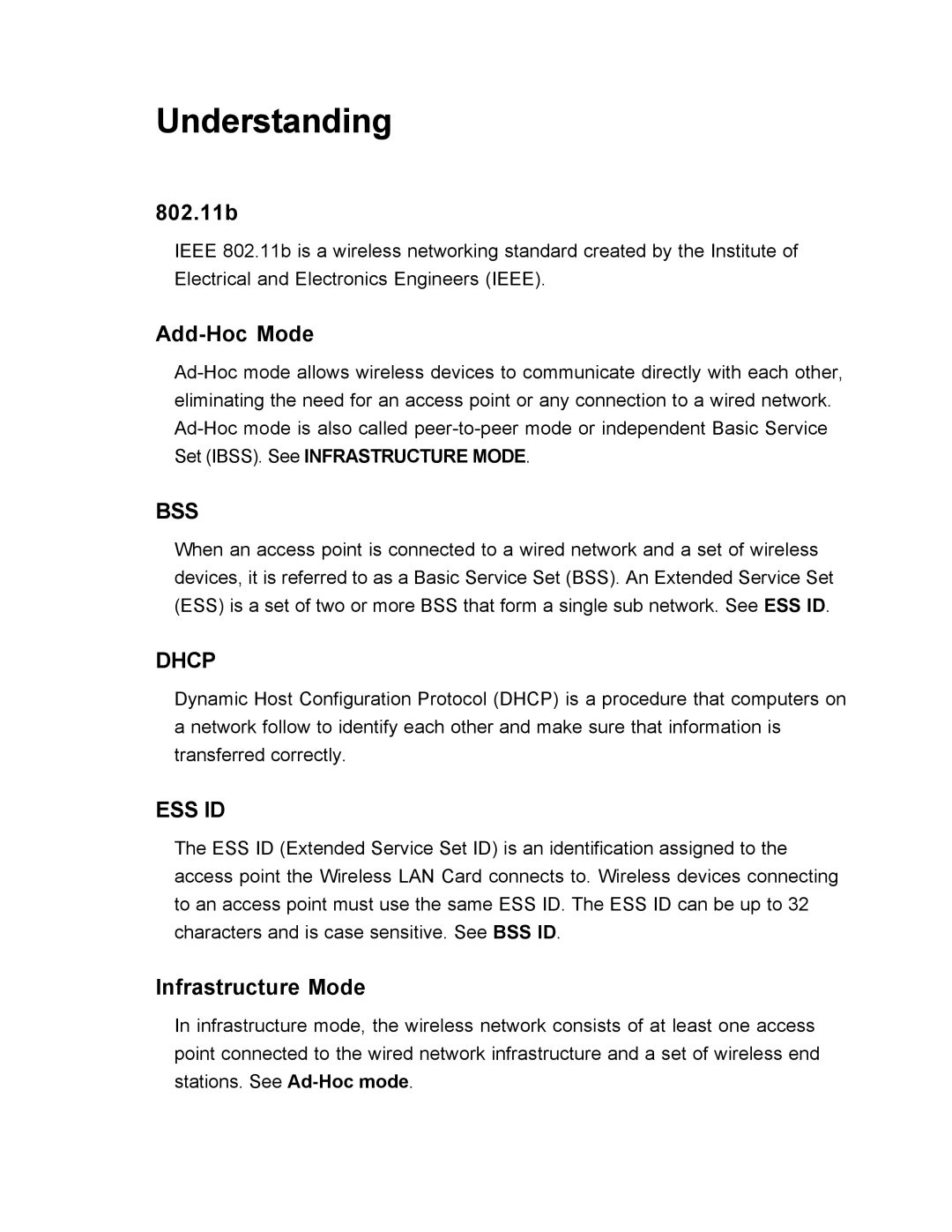Understanding
802.11b
IEEE 802.11b is a wireless networking standard created by the Institute of Electrical and Electronics Engineers (IEEE).
Add-Hoc Mode
BSS
When an access point is connected to a wired network and a set of wireless devices, it is referred to as a Basic Service Set (BSS). An Extended Service Set (ESS) is a set of two or more BSS that form a single sub network. See ESS ID.
DHCP
Dynamic Host Configuration Protocol (DHCP) is a procedure that computers on a network follow to identify each other and make sure that information is transferred correctly.
ESS ID
The ESS ID (Extended Service Set ID) is an identification assigned to the access point the Wireless LAN Card connects to. Wireless devices connecting to an access point must use the same ESS ID. The ESS ID can be up to 32 characters and is case sensitive. See BSS ID.
Infrastructure Mode
In infrastructure mode, the wireless network consists of at least one access point connected to the wired network infrastructure and a set of wireless end stations. See
